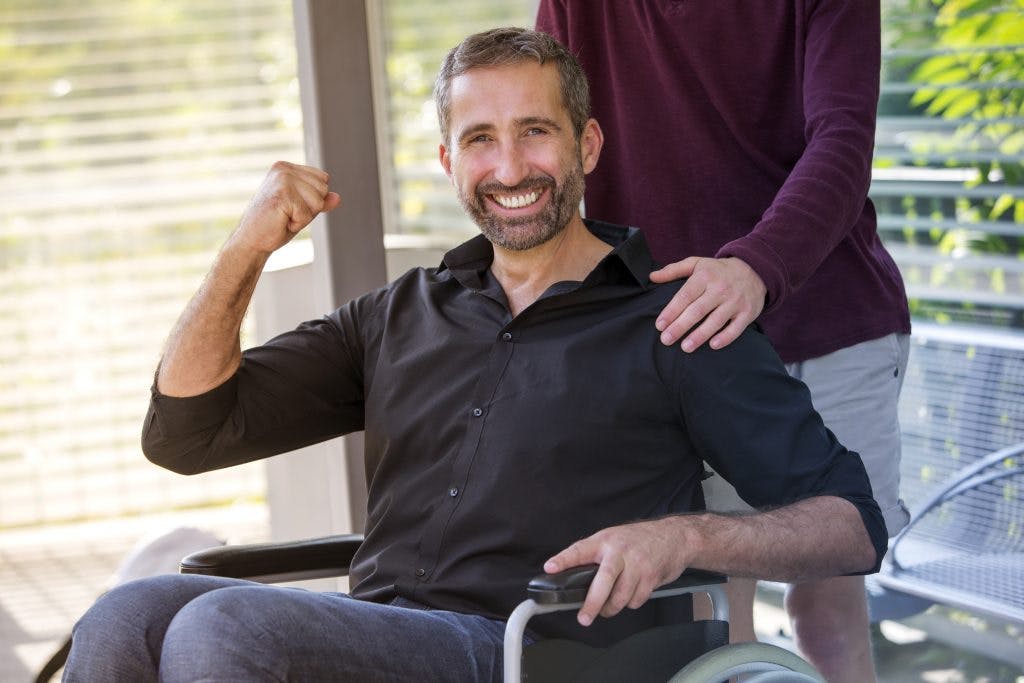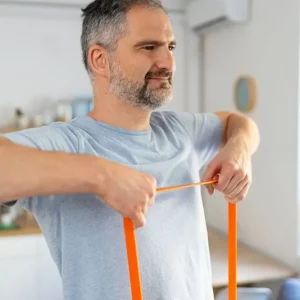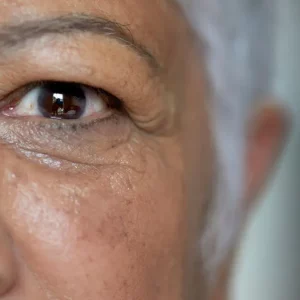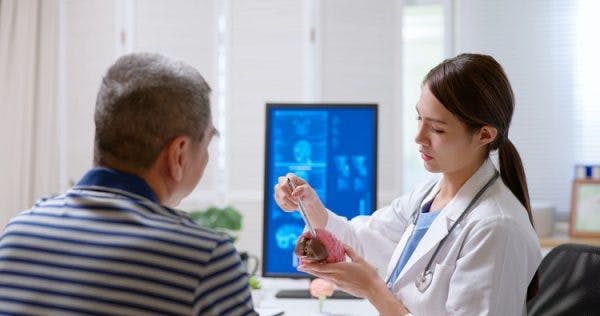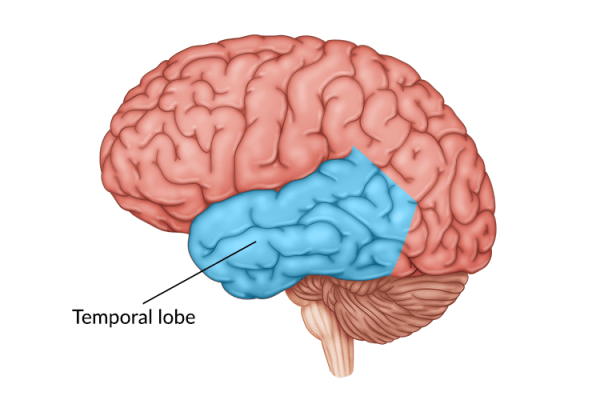Following a brain injury, it is possible that individuals may experience muscle weakness or paralysis. Brain injury paralysis can affect one or more areas of the body, often resulting in difficulties with participating in one’s activities of daily living. Fortunately, it is usually possible to treat brain injury paralysis and recover at least some degree of muscle use.
This article will describe why paralysis may occur after brain injury and identify which treatments may be most effective. Please use the links below to jump directly to any section of this article.
- Causes of brain injury paralysis
- Activating neuroplasticity for recovery
- Treatments for brain injury paralysis
Causes of Brain Injury Paralysis
While paralysis is most often seen among those who have sustained a stroke or spinal cord injury, it is also possible following a traumatic brain injury. This is because each of these neurological conditions can involve damage that interrupts communication between the brain and muscles, resulting in limited mobility.
Many areas of the brain play a role in muscle function, including the premotor cortex and the primary motor cortex. When these areas of the brain become damaged, the brain is no longer able to communicate effectively with the muscles. This may result in a number of motor impairments, including paralysis.
Each side of the brain controls movement on the opposite side of the body. Because brain injuries typically only affect one side of the brain, brain injury paralysis tends to occur on only one side of the body, opposite of where the damage occurred. For example, if the left side of the brain sustains an injury, the right side of the body may become paralyzed, a condition referred to as hemiplegia.
Other neuromuscular conditions can also be present along with brain injury paralysis, including:
- Spasticity: stiff, tight muscles
- Contractures: fixed tightening of muscles from unmanaged spasticity
- Foot drop: inability to lift the front portion of the foot upward
- Dysphagia: difficulty swallowing
Fortunately, through therapy, individuals can often partially or even fully restore the communication between the brain and muscles. This can promote increased mobility and strength of areas of the body that were previously paralyzed.
The Role of Neuroplasticity in Brain Injury Paralysis Recovery
In order to recover lost mobility caused by brain injury paralysis, it is essential to address the root cause: damage within the brain. This can be accomplished by activating neuroplasticity to adaptively rewire affected functions to undamaged areas of the brain.
While the reorganization and creation of neural pathways is always occurring, there is a time of enhanced neuroplasticity in the weeks to months following a neurological injury. Taking advantage of this timeframe can optimize recovery. This is because the creation of new neural pathways can allow healthy, undamaged portions of the brain to assume control over functions previously housed in damaged areas.
Therefore, by engaging neuroplasticity, individuals can rebuild neural pathways between the brain and muscles. This, in turn, will restore communication to the muscles and reduce paralysis and weakness after brain injury.
In order to activate neuroplasticity, individuals must engage in consistent therapeutic exercise. As targeted exercises and activities are practiced, the brain creates and reinforces new neural pathways. As these pathways continue to be strengthened through regular practice, the connection between the brain and muscles will continue growing stronger, promoting recovery.
How to Recover from Brain Injury Paralysis
Although not everyone fully recovers from brain injury paralysis, many individuals achieve at least a partial recovery. The following treatments can help activate neuroplasticity and encourage muscle movement to return after brain injury.
1. Passive Range of Motion Exercises
During passive range of motion exercises, a therapist or a trained caregiver will move and stretch the affected limbs. Since passive range of motion exercises do not involve moving independently with own’s muscle power, they are great exercises for individuals who have been paralyzed. As simple as this sounds, passive range of motion can significantly enhance brain injury paralysis recovery.
In fact, recent research shows that passive movement activates the same parts of the brain that active movement does, and even triggers neuroplasticity. This reestablishes communication between the brain and muscles, which can reduce paralysis and improve muscle function.
In addition, passive range of motion exercises can keep the muscles moving and prevent contractures from developing. This makes practicing passive range of motion critical for preventing further loss of function.
2. Mental Practice
Mental practice can be an excellent tool to kickstart neuroplasticity, especially among those with brain injury paralysis. Also called motor imagery, mental practice involves visualizing oneself performing a targeted movement. The practice requires no actual movement or equipment, making it an easy activity to integrate into one’s daily routine.
Although mental practice does not require individuals to physically move, it still activates the areas of the brain involved in performing movements. This brain activation can stimulate adaptive changes through neuroplasticity. While there are benefits of using mental practice as a standalone treatment, results improve when used in conjunction with more conventional exercise therapies.
3. Electrical Stimulation
Electrical stimulation is another technique that can encourage the brain to rewire itself and improve muscle movement. It involves using electrode pads placed on the skin to send electrical impulses to the affected muscles, causing them to contract. This stimulates the brain and activates neuroplasticity.
For the best results, electrical stimulation should be combined with conventional therapies, such as passive or active range of motion exercises. In addition, individuals can attempt to activate the targeted muscles when they feel the electric pulse to further increase the benefits.
While electrical stimulation units are widely available, it is best to start under a therapist’s supervision. A physical or occupational therapist can demonstrate where the electrodes should be placed and how to safely operate the machine to achieve optimal results.
4. Mirror Therapy
Mirror therapy can be an effective technique to promote recovery from brain injury paralysis. While mirror therapy can be used to address leg and arm function, it is most often used to enhance hand function. To practice mirror therapy, place a mirror over the affected hand, blocking it from view. Then, perform hand therapy exercises with the non-paralyzed hand, watching it move in the mirror.
Since the image in the mirror appears to be the paralyzed hand moving, mirror therapy can trick the brain into thinking it is actually moving the paralyzed hand. This activates mirror neurons in the premotor cortex, a part of the brain that controls movement. This, in turn, can spark neuroplasticity and promote recovery. After consistent practice, individuals may notice their affected hand starting to twitch or move. If this does not happen initially, it may start over time.
Since mirror therapy involves skilled movement of the unaffected extremity, it is only effective among individuals with paralysis on only one side. If paralysis affects both sides of the body, a different treatment technique will be more appropriate.
5. Active Exercise
As individuals pursue recovery through rehabilitative therapy, the connection between the brain and muscles will become stronger. Eventually, individuals may regain some movement in their affected limb(s).
Once active movement becomes possible, it is important to engage in repetitive, active exercises to continue strengthening those neural pathways and improving mobility. A physical or occupational therapist can recommend appropriately challenging active exercises that are tailored to the individual’s needs.
6. Compensation Techniques
Compensation techniques can greatly improve functional independence while individuals are working on recovering from brain injury paralysis. Often recommended by an occupational therapist, compensation techniques involve learning how to function as independently as possible using one’s current skill set.
Some common compensation techniques that may be recommended include:
- Using medical equipment, such as a bath chair or raised toilet seat
- Dressing the affected limbs first and undressing them last
- Utilizing adaptive equipment, like one-handed cutting boards or elastic shoelaces
Although compensation techniques can greatly improve independence, they should only be used as stepping stones to recovery. Becoming overly reliant on these techniques can impede recovery over time.
7. Home Exercises
Continuing to pursue recovery, even outside of therapy, is essential for optimal outcomes. This is because more practice leads to stronger neural pathways and greater recovery. Therapists will often provide written home exercise programs tailored to one’s skill level. However, some individuals prefer more engaging forms of exercise. There are a number of programs designed specifically for this purpose, such as Flint Rehab’s FitMi home therapy device.
FitMi was designed to help individuals accomplish the high repetitions of exercises necessary for recovery. Its technology also allows it to adapt exercises to meet one’s current skill level. FitMi has exercises appropriate for those with paralysis, and it helped a stroke survivor with arm paralysis experience twitches in his affected arm for the first time after three weeks of daily use.
While FitMi is a great option, the most effective home programs are those that individuals are willing and able to use on a regular basis. Using a motivating, appropriately challenging home program can allow individuals to continue improving long after their injury occurred.
Understanding Brain Injury Paralysis Recovery
When areas of the brain involved in movement become damaged, individuals may experience motor impairments, including paralysis. Brain injury paralysis can greatly affect one’s daily life. Thankfully, there are many therapeutic treatments available that can help individuals with paralysis improve their mobility and independence.
The recovery techniques listed above are some of the most evidence-based treatments used to address brain injury paralysis. However, it is important to remember that every brain injury is unique. Therefore, what works for one person may not work for another. With consistent practice, it is always possible to stimulate the brain and encourage improvements.

